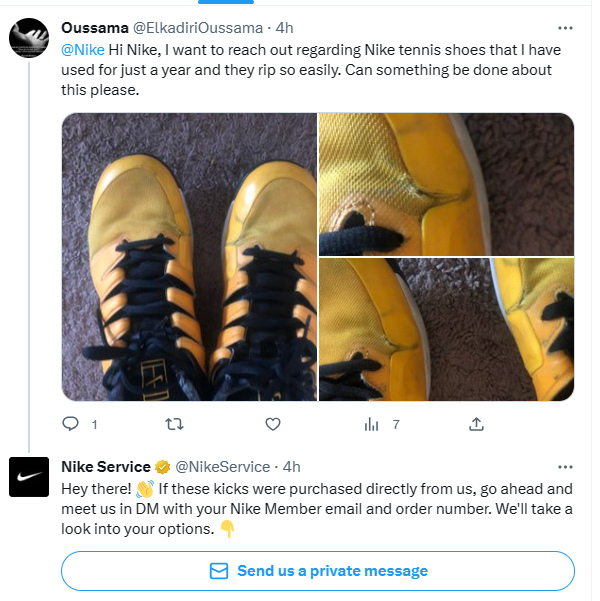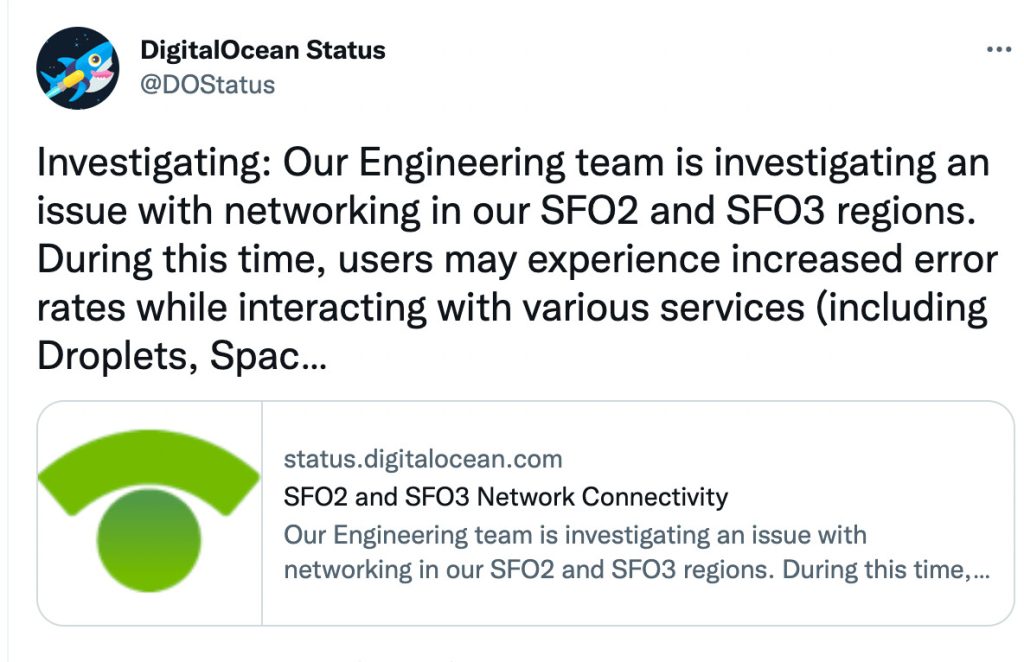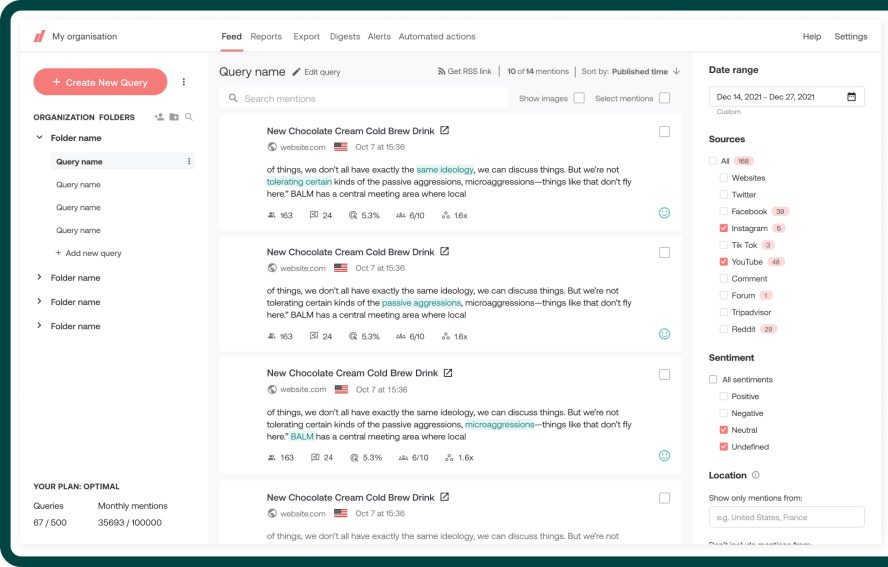Modern-day businesses need a digital presence dominated by instant communication over social media. On the flip side, it has democratized public opinion, which places immense power in the hands of consumers and online communities.
💡 Read Brand Reputation 101: Monitoring, Analysis, and Management Tools
Such a seismic shift in the communication paradigm requires more than traditional reputation management strategies. This means businesses need a more sophisticated and nuanced approach where 77% of them leverage social media, fixing a bad online reputation and requiring mastering social media response management.
For starters, repairing a bad online reputation goes beyond mere damage control. It requires brands to build trust (amongst the audience), showcase authenticity, and create a positive digital identity. From combating negative reviews and media coverage to handling social media crises, businesses face various challenges that can significantly affect customer trust and loyalty.
Therefore, in this piece, we will unwind some of the major factors that go into fixing a bad online reputation and even help strengthen it to create an unmatched brand equity.
Let’s begin!
#1. Leverage Transparent and Authentic Communication
In the age of social media, transparency and authenticity are key to fixing a bad online reputation. Being open and genuine in your communications can transform public perception and build trust. This strategy involves being upfront about your brand’s operations, addressing concerns head-on, and maintaining an honest dialogue with your audience.
Here’s how to implement this tip effectively.
Acknowledge and address concerns promptly
Prompt acknowledgment and addressing concerns go a long way to managing online reputation. Quickly responding to issues demonstrates attentiveness and a willingness to resolve matters.

Such prompt action helps mitigate negative sentiment and reinforces the perception of your brand as responsible and customer-centric.
- Immediate acknowledgment: When issues arise, acknowledge them promptly on social media. This shows your audience that you are aware of the situation and are taking responsibility.
- Transparent problem-solving: Communicate your steps to address the issue openly on social platforms. This openness in problem-solving can significantly restore trust and credibility.
- Incorporate a risk management register: Amidst proactive social media response management, maintaining a risk management register must carry details of potential risks related to social media interactions, such as misinformation, brand misrepresentation, or security breaches.
It should also outline planned responses and mitigation strategies for these risks. This needs actively identifying and preparing for such risks to swiftly and effectively address issues as they arise.
Utilize storytelling to convey authenticity
Storytelling is a powerful tool to convey authenticity and connect emotionally with your audience. Share real stories behind your brand, including its challenges and triumphs, to humanize it and foster a deeper level of trust and engagement, positively impacting your reputation.

- Share real stories behind the brand: Share the stories behind your brand, including challenges and successes. This humanizes your brand and creates a deeper connection with your audience.
- Employee and leadership involvement:
- Involve your employees and leadership in storytelling.
- Let them share their experiences and insights, adding a personal touch to your brand narrative.
- For instance, create a monthly feature on your company’s blog or newsletter where different employees share a memorable experience they’ve had at the company.
Similarly, organizational leaders write occasional articles or record short videos sharing their perspectives on industry trends, company values, or lessons learned from their career journey.
Showcase your brand’s values and ethics
Displaying your brand’s values and ethics is critical to reputation management. Regularly communicating about your ethical practices, social responsibilities, and core values builds a positive brand image.
Also, this aligns your brand with positive ideals and builds a reputation that resonates with your audience’s principles and beliefs.
- Highlight your ethical practices: Regularly communicate your brand’s ethical practices and values. This includes social responsibility initiatives, sustainable practices, or community involvement.
- Authentic advocacy: Advocate for causes that align with your brand’s values. Genuine advocacy positively impacts your brand’s reputation and resonates with like-minded audiences.
Read How to Check a Company’s Reputation
#2. Adopt a Proactive Social Media Response Management Approach
A proactive social media response management approach is necessary, wherein online narratives can unfold rapidly and unpredictably. Adopting such a stance requires you to go beyond simply responding to what’s already out there, set the tone, and steer conversations that benefit your brand.

There are various methods, like implementing active social listening, engaging thoughtfully with social members, and maintaining a positive social media presence. All such efforts help battle any negative or ill perceptions about the brand.
Implementing this strategy requires a blend of technological savvy, empathy, and strategic foresight. It often needs to adopt crisis management solutions and turn such concerns into opportunities for brand strengthening and growth.
Use social media listening tools
Monitor your brand’s presence on social media effectively by using specific tools designed for this purpose. These tools called social media listening tools can track mentions of your brand, relevant keywords, and important conversations for your business.
Read How to Use Social Media Listening to Humanize Your Brand

Tools like Determ can help you quickly notice and react to positive and negative comments about your brand.
Create and use response templates
Creating a collection of response templates for frequently encountered inquiries or complaints can be a real game-changer in managing social media interactions. Think of these templates as a foundation or a starting point.
Such a repertoire helps ensure that your responses are consistent and efficient, maintaining a uniform tone and approach recognizable as your brand’s voice.
Encourage positive sharing
Motivate satisfied customers to share their positive experiences, an invaluable strategy for managing your brand’s online reputation. When customers speak positively about your brand, it creates a ripple effect of trust and credibility.

For instance, you could run a photo contest on social media where customers showcase your product in action or ask for testimonials that you feature on your website and social channels. Such actions will encourage more customers to engage and share their positive stories, amplifying your brand’s image and attracting new potential customers through authentic, customer-generated content.
#3. Build and Maintain a Positive Brand Presence Online
Building and maintaining a positive brand presence online extends beyond occasional posts and reactive engagement. It forms a part of your cohesive social media response management strategy that works to build an online persona to reflect your brand’s core values and strengths. It is a continuous process to carefully curate content highlighting your brand’s unique selling points, achievements, and customer-centric approach.
Ultimately, this helps establish a solid foundation that attracts new followers, fosters loyalty among existing customers, and solidifies your brand’s reputation in the digital world.
Let’s explore some of the practical ways to implement this.
Highlight customer success stories and testimonials
Emphasize showcasing customer success stories and testimonials as a part of your online reputation management strategy. This will enhance your brand’s credibility and appeal by showcasing real-life examples of customer satisfaction and positive experiences.

Here are some of the ways to do it.
- Demonstrate customer experiences: Regularly feature customer success stories, testimonials, and reviews to build credibility and show potential customers your brand’s positive impact.
- Leverage user-generated content: Encourage customers to share their experiences with your products or services. Then, reposting their content can serve as a powerful endorsement for your brand, motivating other users to share positive feedback.
Engage with content reflecting brand value
When venturing out on social platforms, engage with content that echoes your brand’s core values to help shape public perception. It requires creating and sharing content that informs, entertains, and resonates deeply with your brand’s ethos.
For instance, if you are a SaaS firm specializing in productivity tools, consider engaging with content highlighting the importance of efficient workflows and time management.
Here are some ways to do it.
- Align the content strategy with values: Create a social media content strategy to resonate with your brand values. This requires sharing stories, achievements, and initiatives reflecting your brand’s values.
- Interactive and engaging posts: Create interactive content such as polls, quizzes, and Q&A sessions on social platforms to engage your audience actively. This helps boost engagement and shows that your brand values customer input and interaction.
Proactive community management
Think of social media as a robust tool for communication and interaction protocol to cultivate a vibrant and engaged online community around your brand. This approach involves consistent engagement, fostering meaningful conversations, and creating an inclusive space where your audience feels valued and heard.
It’s a strategic move to build lasting relationships and a loyal customer base.
- Foster an online community: Actively work to build and foster a community around your brand by engaging in conversations, responding to comments, and creating a space where your audience feels heard and valued. For example, Adobe does this by adopting Adobe Live, managing Adobe-specific forums on various platforms, and engaging with users on various social platforms.
- Host online events: Consider hosting webinars, live Q&A sessions, or virtual events. These activities can increase engagement and strengthen your community’s connection to your brand.
Over To You
Implementing the above tips can go a long way in fixing a bad online reputation. Therefore, adopting a proactive social media response management approach will result in a gradual yet profound transformation in how they are perceived online.
That said, transparent and authentic communication and a genuine showcase of the brand’s values and ethics will rebuild trust and credibility. This honest approach resonates with audiences, fostering a sense of integrity and reliability.
Focus on battling negative sentiments and replacing them with positive ones, where customer complaints become stories of successful resolutions. Amidst the time when online reputation can make or break a brand, effective social media response management is not just a remedy but a handy tool for long-term success and growth.
Carl Torrence is a Content Marketer at Marketing Digest. His core expertise lies in developing data-driven content for brands, SaaS businesses, and agencies. In his free time, he enjoys binge-watching time-travel movies and listening to Linkin Park and Coldplay albums.


